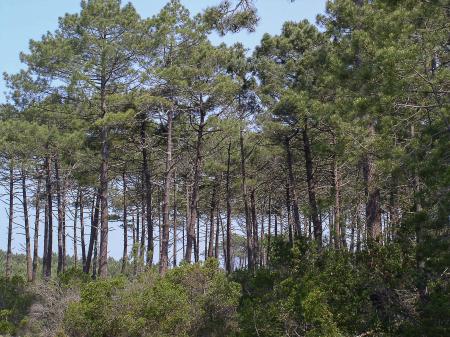
Objective:
The aim of the EVAFORA study is to simulate the behaviour of Pinus pinaster stands in the face of climate change by 2100 by analysing wood volume production and carbon stock data. Climatic variables (temperature increase, precipitation decrease,...) as well as the effects of silvicultural operations are integrated thanks to the GO + model. In the long term, will maritime pine remain the species best adapted to the new climatic conditions in the Landes de Gascogne massif? What silvicultural management will ensure greater stand resilience to climate change?
Context:
Currently, with more than 800,000 hectares and 87 million standing cubic meters, Maritime Pine is the dominant species in the Landes de Gascogne forest massif. Only species of production adapted to the soil and climate conditions (sandy, acidic and mineral-poor soil), Maritime Pine represents a major economic issue in the forest-wood sector in Aquitaine thanks to its wood production and in the past thanks to its resin production. It seems essential to know the potential impact of climate change on its growth in order to help forest managers in their decision making.
Contacts:
simon.martel@cnpf.fr